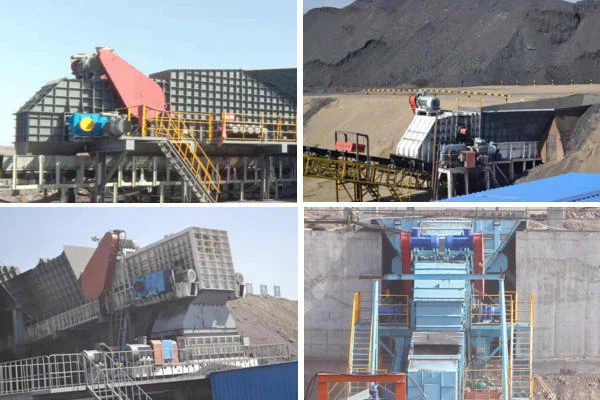Stamler feeder breaker integrates receiving, screening, crushing, conveying and other process equipment. Through the optimization of process flow, it has excellent performance of open-pit mining crushing operation. Through the combination of different models, it can be combined into a powerful crushing operation line to complete multi-demand processing operations. Its advanced design, excellent performance, high production efficiency, convenient use and maintenance, economic operation cost, stable and reliable work.
These machines are designed to reduce the variety of materials in the mining industry. They can be used to treat anything from untapped shale to frozen concentrate. The feed crusher can be used to reduce a variety of mineral, coal, organic, rock based materials.
Stamler feeder breaker is usually used as an initial processing machine for mining materials. The feeder makes use of conveyor belt technology to make the production of mine materials go on smoothly. By reducing laminated material early on, the risk of machine damage or blockage during later processing is minimized.
The feeding crusher can also be used for continuous feeding and crushing of mine waste and other materials. This can greatly reduce the cost of maintenance or operation of additional equipment.
Stamler feeder breaker uses engineering-grade roller chains and solid steel flying between the sprocket head and stern shaft to deliver material along the steel deck. The head shaft is hydraulically driven or mechanically mounted with a hydraulic motor or shaft mounted with a right Angle reducer with a torque control coupling. Crusher roller is mechanically driven with shaft mounted, right Angle reducer with torque control coupling. Steel machine frames are made to withstand the toughest conditions. To meet the safety requirements of mining,
Stamler feeder breaker drives the conveyor and the crusher roller and the downstream belt conveyor interlock operation. Through the programmable logic controller, these functions are periodically turned off at specified intervals when the belt conveyor stops or when material is not present. The receiving end of stamler feeder breaker can be designed for materials from high-capacity trucks, front-end loaders, shuttles or at ground level by bulldozers.
Structure and Features
1. Stamler feeder breaker is divided into conveying device and crushing device, conveying device is divided into scraper conveying type and heavy plate conveying type two;
2.Stamler feeder breaker set by, broken, transportation and other process equipment as a whole, through the optimization process has the excellent operation performance of fractured open-pit mining, through the different type of joint and combined into a powerful line broken homework, finish demand more processing work, is a large semi mobile crushing station indispensable important equipment.
3. Stamler feeder breaker products have light weight, small volume, especially suitable for narrow site work;
4. The original feeding, crushing and discharging are combined in the same horizontal plane to form continuous horizontal material flow crushing. The whole crushing system adopts a single direction of material flow that does not need to change the direction of material flow, forming a compact and high-yield production system.
5. Stamler feeder breaker has the advantages of adjustable particle size and crushing ratio, compact structure, stable operation, low cost, low noise, easy installation and debugging, high mobility, no requirements of civil steel structure.
6. Stamler feeder breaker directly receives the material from the receiving area for crushing or the conveying device receives the material from the receiving hopper to the crushing station;
7. The core components of the whole crushing station system are imported to ensure the operation of the system with high reliability.
8. Equipped with perfect electrical system and monitoring system (infrared camera, can be used in night vision), remote centralized operation and monitoring;
It can meet the feeding, crushing, screening and transportation operations of large and medium-sized open pit mines.






